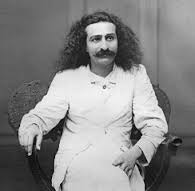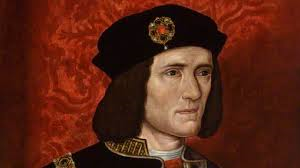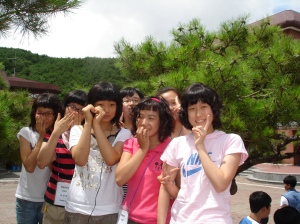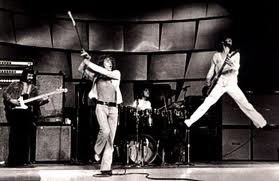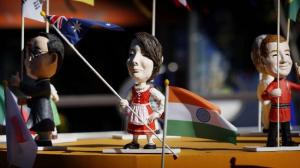“Now young Mr Kim you know and I know that…”
The state broadcaster, the ABC, in the State of Queensland, before Christmas, showed a minute or so segment of human interest on the educational stay of students from the Horseriding School of Korea at an equestrian stud near Ipswich, west of Brisbane.
http://www.abc.net.au/news/2016-12-13/korean-horsemanship-students-southern-queensland/8097874
The internet report doesn’t show what was on the television broadcast. One of the Korean horse riding students, young Mr Kim, said, “Australian horses are so good and nice. Not like Korean horses.”
Now young Mr Kim you know and I know that…every thoroughbred from Jangsu to Japan, Ireland to New Zealand, Kentucky to the horses owned by the Queen, or trained by Bart Cummings (1927-2015, 12 time Melbourne Cup winning trainer 1965-2008) to even a cousin of mine with a horse stud (wealthy spouse!)…they’re all related. Every horse! Descended from The Byerly Turk (1680s), The Darley Arabian (1704), and The Godolphin Arabian (1729).
If you mean the thoroughbreds in Korea (from the Jangsu Stud for example) are not as nice and gentle as Australian cross-breed horses, then that may be true. But I find it hard to credit that Korea’s indigenous horse, the Jeju pony is a difficult customer compared to our Australian ones 🙂
I should add one more thoroughbred ancestor. The horse with the most identifiable coat.
The grey thoroughbred today is descended from Alcock’s Arabian. Owned by an ancestor of Her Majesty, Queen Victoria’s Consul to Fuzhou and Envoy Plenipotentiary to Japan and China, Dr Sir Rutherford Alcock, perhaps!
I wondered what other East Asian horses besides the Jeju pony were out there. First stop. Naturally.
FUZHOU, FUJIAN PROVINCE, CHINA:- The Jinhong.
Difficult to find. And that’s just photographs. There is one in Hendricks’ International Encyclopedia of Horse Breeds (2007, p.242), but of a teenage Chinese girl sitting on a Jinhong in the 1960s. Description is of a Fujianese chestnut-colour rural pony. I only hope it’s not this…
Time to make a phone call (full disclosure, I visited The Fuzhou Zoo on a school excursion circa 2010 of the photos’ purported taking but I did not see the above).
“Hello, Director of Entertainment, Fuzhou Zoo? You know that painting by The Great Stubbs? It’s his imagination of a lion on a horse. Not a model scene for a live action spectacular.”
“The Great Stubbs”, well I think he deserves the title. Read in some art book that the likes of Raphael, Leonardo, Michelangelo, Titian, Velazquez, Rubens, Rembrandt and all the Old Masters never quite got the horse right. Until George came along. You could argue that they couldn’t be bothered getting the horse anatomically accurate since they didn’t have the Newmarket Racecourse in Italy, Spain, The Netherlands with its attendant aristocrat/gentry fans of The Byerly Turk, The Darley Arabian and others willing to shell out big money for George’s paintings. A very English contribution to Art.
Would it not be a grim irony, however, if it is the Jinhong pony in the photos that the Fuzhou Zoo is helping to preserve, albeit through this circus-style display? Alert: Jinhong is an Endangered Species.
Merci beacoup aux Francais passione contributeurs des pages chevaux en Wikipedie. Excuse my French. Only on this page, not on any other in the English language, despite our English/Australian/New Zealand/Canadian/USA interest in horses will you find the true state of the Jinhong Pony. Google does translation into English.
https://fr.wikipedia.org/wiki/Jinjiang_(cheval)
Time to make another phone call:-
“Hello, Cousin? Do you have room on your horse stud outside Melbourne for a matching pair of Jinhong ponies? It’s all in a good cause.”
I haven’t been at the forefront of environmental conservation of flora and fauna in its myriad forms but I will now urge…
“NEVER MIND THE PANDA. SAVE THE JINHONG!”
Next Stop.
HOKKAIDO PROVINCE JAPAN:- The Ban’ei.
Hokkaido, the most northern of the Japanese Home Islands is in a sense the most modern. In horse-terms. It’s not that the Japanese people never knew of Hokkaido but moving north from Honshu and encountering the Emishi (sort of Ainu original inhabitants) the annexation of the big island occurred at a similar time to the Settlement of Australia. From the 1770’s (when Stubbs was painting) and for similar reasons (the Japanese/cannot let the Russian Tsar grab this big island, the British/cannot let the French grab this big island). How were the settlers in both countries to clear the land, farm the land, and transport its food and goods?
Thank you Scotland! The Clydesdale to the rescue (Scottish animal breeding at its best, from the iconic small terriers to the world’s biggest horse). “The horse that built Australia.”
And for the Hokkaido settlers, similar massive horses, though, from France and Belgium.
1840’s Australia – my earliest Jones’ ancestors on the northern rivers of New South Wales, logging trees and moving them, if we go forward 70/80 years to this cine-camera film from 1920, I don’t think the scene and the technology (maybe better wagons!) would have changed all that much.
Much less than 70 years, now a mere 13 year jump from 1920 to 1933. Daimler-Benz’s internal combustion engine was doing for the draft horse in the West with the invention of the tractor and the truck. On the repeal of Prohibition in the US in 1933, the Busch’s (father and son) owner and heir to Budweiser Beer hit on a marketing idea to get Budweiser back in public recognition. Clydesdales! Delivering beer kegs to former Governor Al Smith of New York, to President Roosevelt in Washington, and for Clydesdale teams to appear throughout America, which they still do.
12 years on to 1945. The end of WW2 and British author George Orwell has written his political fable, “Animal Farm.” Is it coincidence that the only sympathetic character (animal or human) in the novel is the draft horse, ‘Boxer’?
Boxer, is politically naïve, but Orwell never suggested that the revolt by the animals against Farmer Jones(!) with Boxer delivering a mighty kick was not justified.
And so to Hokkaido and within the last week (The Ban’ei keeps going during the Japanese winter). The Hokkaidens remember the draft horse and invent a new horse race not seen anywhere else around the world.
Over 200 metres with 2 hills. Not a test of horse-speed (used in Daimler-Benz derived automobile engines to this day) but of…horse strength.
The only horse race where you can walk alongside your horse and cheer on.
A Japanese mobile phone company stepped in to save the last Ban’ei track on Hokkaido, which were down from four to one. I doubt any other internet provider including national telecoms (let alone Cook of Apple/Zuck of Facebook et al) would hasten with sponsorship to save a regional/community sport.
Last stop. Australia.
My New Sport. http://horsearchery.com.au/
I retire from cricket. (just joking). However, there are probably as many members of the Australian Horse Archery Association as there are members of the Helensvale Cricket Club! Have done bow archery near Namwon (whence the horse-school visitors to Ipswich, Queensland, including young Mr Kim arrived). So that’s half the skill. Now I just need to learn how to get on a horse. Haven’t done that since I was 16 on a family holiday in the Snowy Mountains near Canberra. 🙂
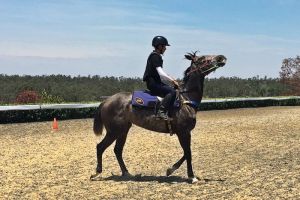

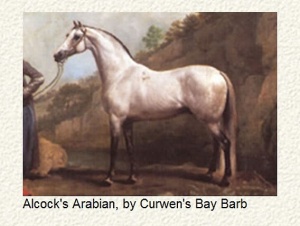
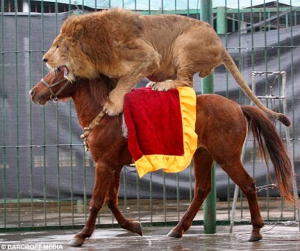
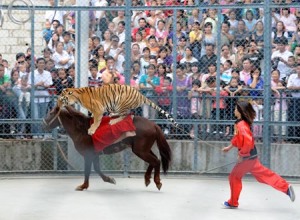

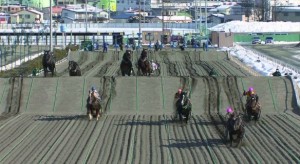
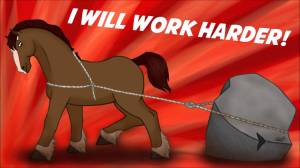

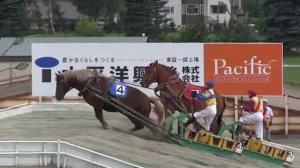
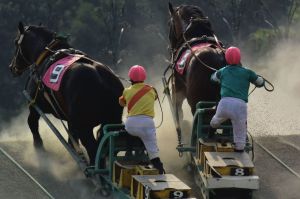
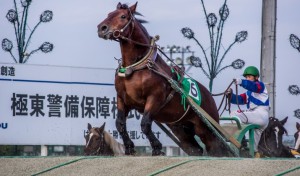
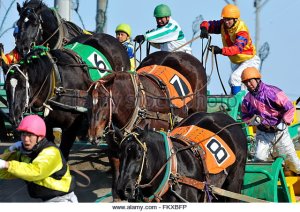
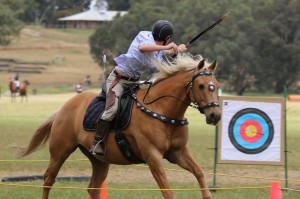

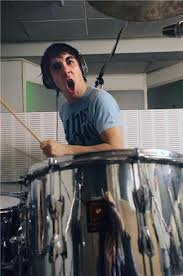 Photo Keith Moon Copyright Barrie Wentzel.
Photo Keith Moon Copyright Barrie Wentzel. 